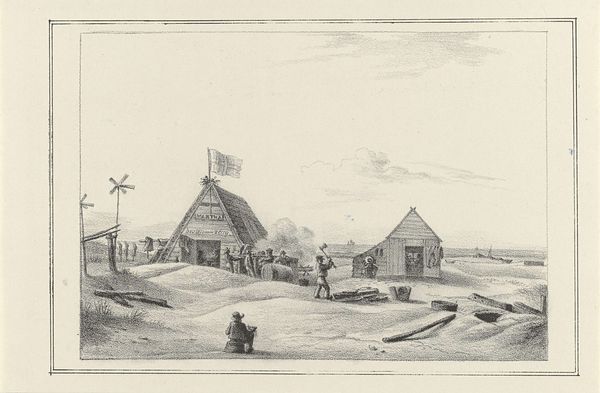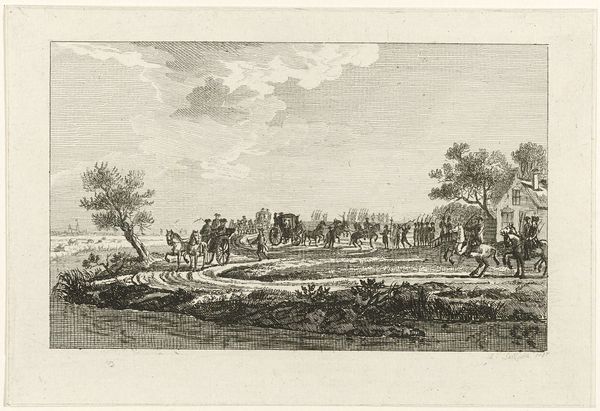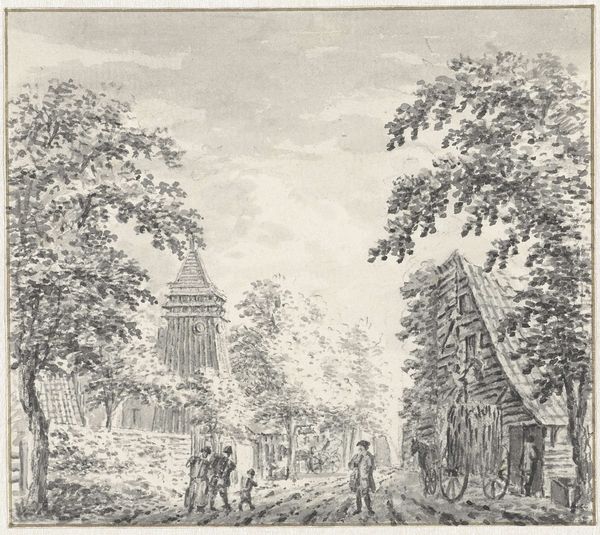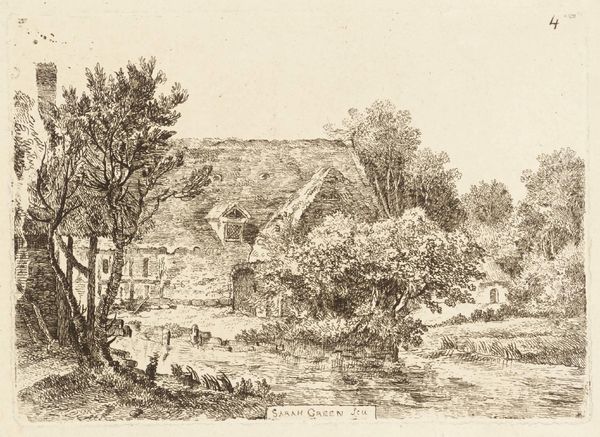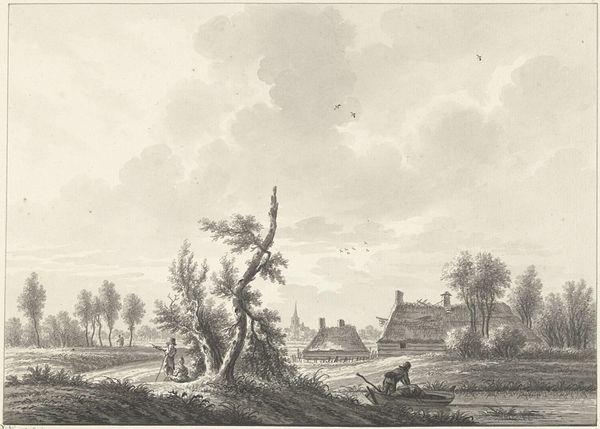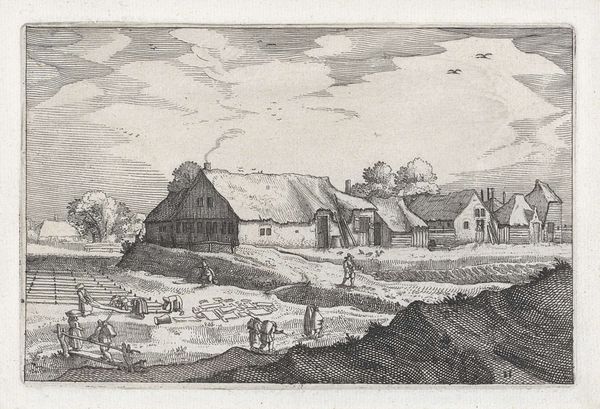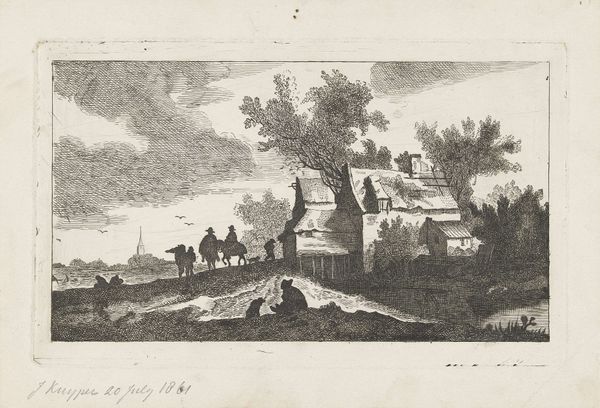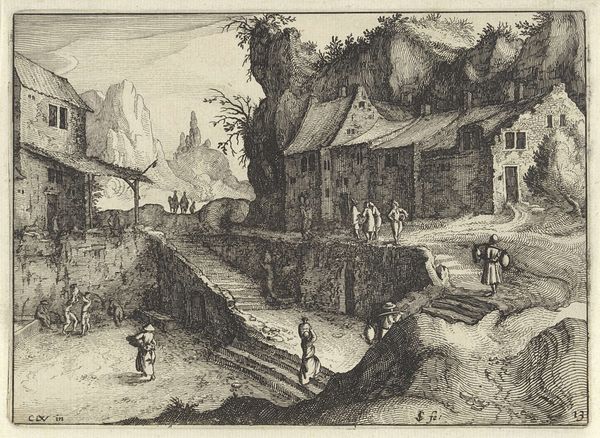
drawing, pencil, chalk, architecture
#
drawing
#
neoclacissism
#
pencil sketch
#
landscape
#
pencil
#
chalk
#
architectural drawing
#
genre-painting
#
architecture
Dimensions: height 192 mm, width 267 mm
Copyright: Rijks Museum: Open Domain
Curator: This is "Kalkovens bij Hillegom met op de voorgrond kolfspelers," or "Lime Kilns near Hillegom with 'Kolf' Players in the Foreground," a drawing by Hendrik Tavenier, dating from around 1744 to 1807. Editor: It’s quiet, isn't it? Such pale tones, almost ghostly. And those dominating lime kilns looming over the figures... a powerful use of scale. Curator: Tavenier was working within the Neoclassical movement, influenced by Enlightenment ideals. This piece speaks to a time of burgeoning industrialization, doesn't it? Hillegom was known for these lime kilns. Editor: Precisely. You see how the materials are rendered – pencil and chalk – basic stuff, yet he captures the heft of the brick and the lightness of the surrounding landscape. It highlights the contrast between labor and leisure. The labor-intensive process of lime production versus the more leisurely game of 'kolf'. Curator: 'Kolf,' a precursor to golf, was a popular pastime for the elite. So the drawing becomes a study of social dynamics, wealth distribution, perhaps even an idealized vision of rural life in a rapidly changing society. Editor: I am particularly drawn to the way he details the tools – the golf clubs, the implements around the kilns. They become almost characters in themselves, signifying the means of production and leisure. What are these figures doing in their environment? Are they engaging or just filling it? Curator: That’s an interesting point. The placement of the kilns against the kolf players...Tavenier is placing this game of the privileged against the backdrop of this industrious architecture. It prompts us to consider whose labor builds this society and who profits. Editor: And consider the material realities implied - the raw materials that are getting transformed into construction products...It all hints at complex systems of labor and exchange. Aesthetically pleasing, yet grounded in a specific socioeconomic reality. Curator: Well, thinking about this depiction really expands my understanding of the relationship between landscape, industry, and leisure in the 18th century. It offers a window into the social values and power structures of the time. Editor: Yes, it’s not just a pretty landscape sketch; it’s a snapshot of a particular moment where materiality, labor, and leisure intersect in intriguing ways. It’s a landscape imbued with process and power.
Comments
No comments
Be the first to comment and join the conversation on the ultimate creative platform.
